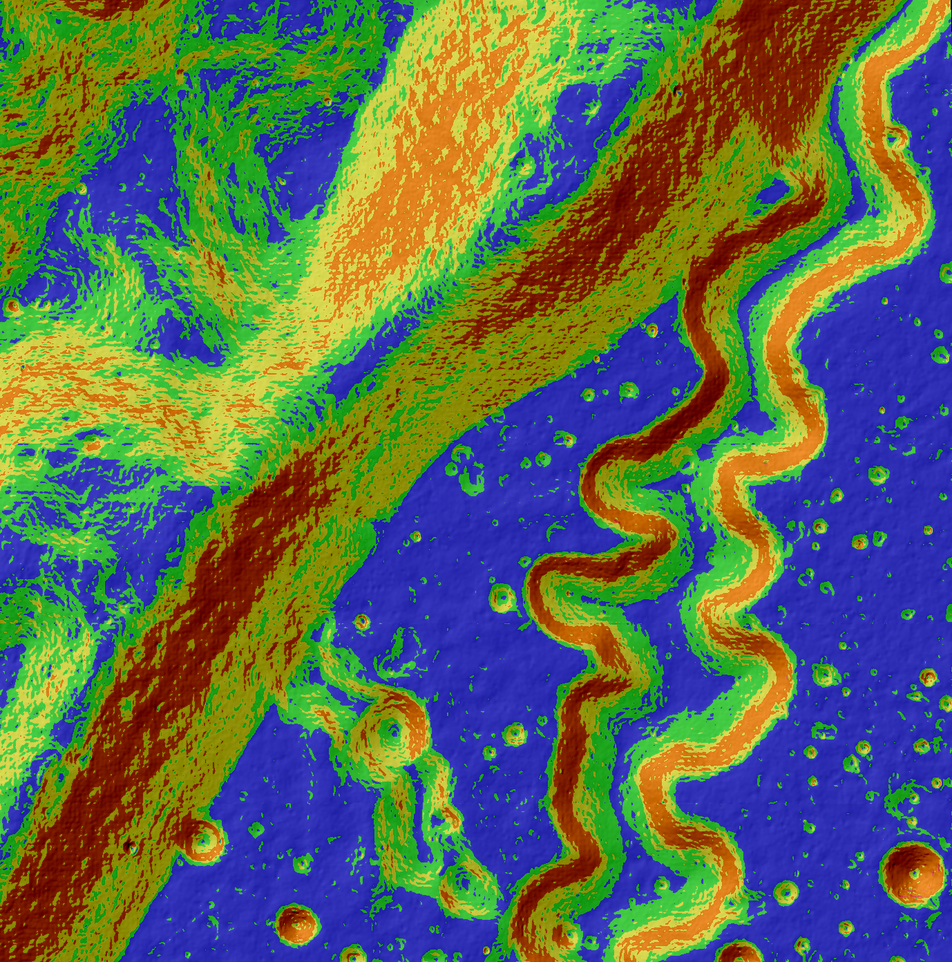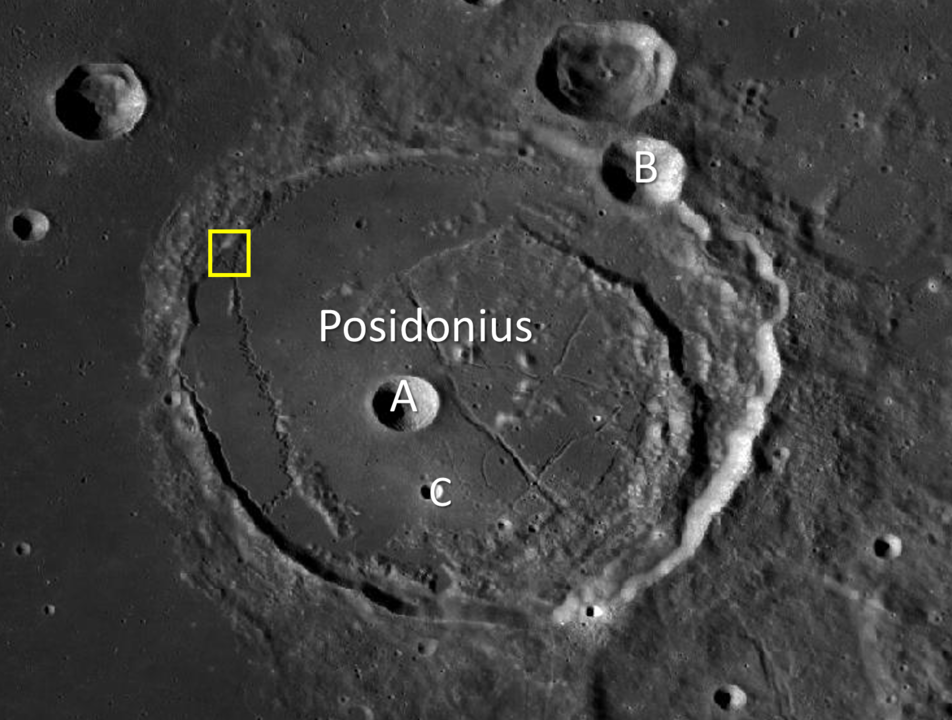
Sinuous rilles, such as the one above, form through the flow of hot, turbulent lava. Rilles can be found in many locations across the lunar surface and two very different mechanisms are generally thought to form them. Mechanical erosion refers to the physical removal of material by the lava flow, similar to how rivers erode channels on Earth. Alternately, some lavas are so hot that they partially melt the substrate, and deepen the channel through time. These processes on there own would both result in downcutting into the surface, but they were often simultaneously working to reshape the lunar surface. Posidonius exhibits several rilles of differing types, seen below (linear and sinuous).

Posidonius is a 95 km diameter crater on the northeastern margin of Mare Serenitatis. The floor of Posidonius exhibits a number of interesting geologic features. In the western portion of the floor, the sinuous rille from Today’s Featured Image winds its way through smooth plains that partially bury the crater wall. In the eastern portion, the floor is fractured and tilted, similar to craters like Karpinskiy, creating a cliff that drops ~ 1 km to the smooth floor. When compared to the highlands, Posidonius has few craters superposed on its floor, like Posidonius A (11 km) & C (3.5 km), indicating that the floor of this crater is younger.
Check out the full slope map below!
Download your own version here!
Related Posts:
Published by H. Meyer on 31 July 2014